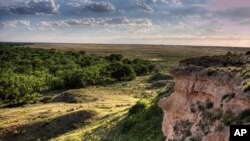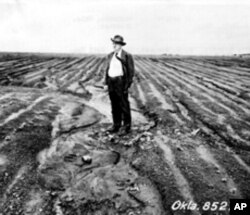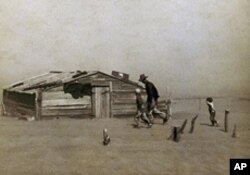In 1935, during the heart of the Great Depression, whole sections of the American Midwest suffered through a terrible drought that produced monstrous dust storms. They sucked up what little topsoil existed on prairie farms and blew away the livelihood of thousands of small farmers with it.
One day that spring, a government soil surveyor named Hugh Hammond Bennett testified before Congress, pleading for creation of a federal service that would teach farmers how to plant the grasses that would save their land.
As he spoke, a thick cloud of dust howled by the window, almost blotting out the sun. It had blown all the way from the Great Plains, more than 3,000 kilometers away.
There, gentlemen, Hugh Bennett told the congressional committee, goes Oklahoma.
That certainly made his point, and the Soil Conservation Service was born. It began to plant grasses and crops that anchor the soil and keep it from blowing or washing away. Today, 20 publicly owned National Grasslands spread over 1.5 million hectares stand as the legacy of that effort.
They are generally marginal lands - their soil too poor for cultivation. Scars from abuse by plowing or overgrazing remain. Where too many cattle trampled the earth and turned the sod to dust, useless yucca and sagebrush have replaced the grass.
Fewer than 50 centimeters of rain a year fall on much of the western plains, so dust still blows. But the U.S. Forest Service, which oversees the grasslands, encourages managed grazing on these public lands, for which ranchers pay fees that help pay for rural roads and schools.
The Forest Service calls this living carpet of grass an ecosystem. Despite new and managed growth on the Plains, one still finds the ruts of the tall wagons called prairie schooners that, a century and a half ago, brought modern civilization, with its blessings and curses, to these seas of grass.











